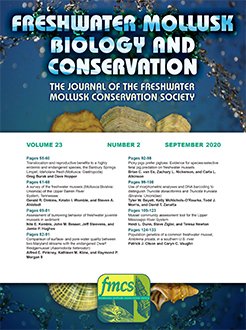Closely related unionid species often overlap in shell shape and can be difficult to accurately identify in the field. Ambiguity in identification can have serious impacts on conservation efforts and population surveys of threatened and endangered species. Truncilla donaciformis and Truncilla truncata are sister species that overlap in their distributions and frequently co-occur in central North America. Because T. donaciformis is endangered in Canada and imperiled in some US jurisdictions, co-occurrence with the morphologically similar T. truncata means that misidentification could seriously impact status assessments and recovery efforts. The objectives of this study were to (1) establish species identifications of specimens using DNA barcoding (COI), (2) determine how well traditional morphometrics and geometric morphometrics accurately discriminate between the two species, and (3) determine the accuracy of field identifications relative to molecular and morphometric identifications. Truncilla specimens from four rivers in southern Ontario were photographed and visceral mass swabs were taken. Positive identifications of all specimens were obtained through DNA barcoding and comparison with sequences from GenBank. Traditional and geometric morphometric approaches were used to assign specimens to species. Assignments generated were compared to identifications based on mtDNA barcodes, with traditional and geometric morphometric analyses found to be 90% and 99% accurate in species identifications, respectively. This study confirmed the presence of T. donaciformis in Ontario's Thames River, and revealed that all Truncilla collected for this study from the other three rivers were T. truncata. This study reinforces the utility of combining geometric morphometric analyses and DNA barcoding for identifying problematic unionid specimens.
How to translate text using browser tools
28 October 2020
Use of Morphometric Analyses and DNA Barcoding to Distinguish Truncilla donaciformis and Truncilla truncata (Bivalvia: Unionidae)
Tyler W. Beyett,
Kelly McNichols-O'Rourke,
Todd J. Morris,
David T. Zanatta
DNA barcoding
Laurentian Great Lakes drainage
morphometric analysis
shell shape
species identification





